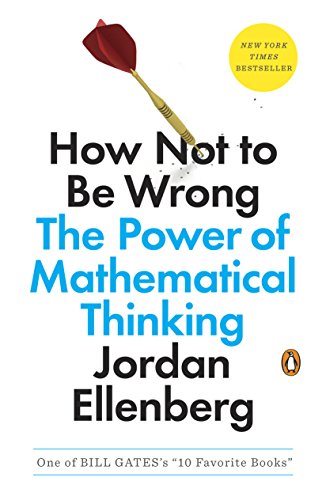How Not to Be Wrong: The Power of Mathematical Thinking by Jordan Ellenberg Link to heading
Summary Link to heading
“How Not to Be Wrong: The Power of Mathematical Thinking” by Jordan Ellenberg delves into the intersection of mathematics and everyday life. Ellenberg explores how mathematical principles can illuminate real-world phenomena and guide better decision-making. The book covers a wide array of topics, including statistics, geometry, probability, and logic, illustrating each with engaging and often humorous examples. Ellenberg demystifies complex mathematical concepts, demonstrating their relevance and applicability to various fields, such as politics, economics, and personal decision-making.
Review Link to heading
Ellenberg’s book has been widely praised for its ability to make mathematics accessible and relevant to a broad audience. One of its major strengths is the author’s engaging writing style, which combines wit and intellect to explain complex topics. The book appeals to both math enthusiasts and those who may feel intimidated by the subject. While some readers may find challenging sections, the book generally balances technical content with entertaining anecdotes. Critics have noted that at times the depth of mathematical detail can vary, but overall, Ellenberg successfully illustrates the value of mathematical thinking.
Key Takeaways Link to heading
- The Importance of Context: Numbers and data can be misleading if not considered within the proper context. Understanding the background and source of data is crucial.
- Mathematical Thinking: Mathematical principles are not confined to classrooms; they can solve practical problems and promote critical thinking in everyday life.
- Probability and Risk: Ellenberg illustrates how understanding probability can lead to better decision-making and risk assessment, emphasizing the role of mathematics in evaluating uncertainties.
- Mistakes and Corrections: The book highlights that making mistakes is often part of the learning process, and mathematics offers tools for learning from and correcting errors.
Recommendation Link to heading
“How Not to Be Wrong” is recommended for anyone interested in understanding the world through the lens of mathematics, whether they’re students, professionals, or curious readers. It’s particularly beneficial for those looking to enhance their decision-making skills and appreciate the practical application of mathematics. With its blend of humor and insight, the book serves as both an educational and entertaining read.
